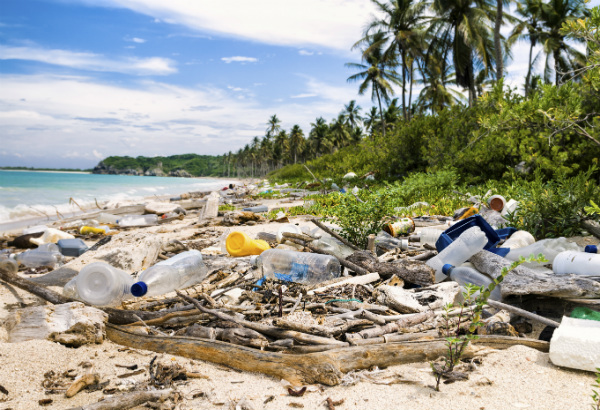Bottled vs Purified Water: What’s the Healthiest Option?
Think about the environmental impact you're making before you buy a bottle of water. We look at some alternatives.
 Photo © iStock
Photo © iStock
Nothing ruins a trip like drinking unsanitary water, causing diarrhea, nausea, exhaustion or fever. Illness caused by nasty water-borne bacteria and viruses is one of the leading causes of health problems for travelers. It can have serious immediate consequences and after-effects that may last months.
There are also other water pollutants to consider, such as chemicals and metals that come from poorly maintained water pipes and other sources.
- Local water risks while traveling
- Environmental impact of bottled water
- Bottled water alternatives while traveling
Local water risks while traveling
High-risk areas include Central America, most of Africa and Asia, and the Middle East. Moderate risk areas include Eastern Europe, Russia, South Africa, Argentina, Chile, and the Caribbean. Even developed countries aren't necessarily risk-free.
If you want to drink water safely, assume the worst and plan accordingly.
Don't drink local tap water without first checking if it's safe to do so. If not, you'll need to purify it in some way, even for brushing your teeth or washing fruits and vegetables. This extends to locally produced ice cubes: freezing doesn't kill the bacteria, so ask for drinks to be served without ice unless you know it comes from a safe source
Environmental impact of bottled water
You could opt for bottled water. However, anyone who has traveled will be well aware of the huge problem of plastic bottles littering the countryside, turning pristine countryside and beaches into rubbish tips.
Using just four bottles a day, a single traveler is likely to throw away over 50 bottles in just a couple of weeks – not a nice legacy to leave your host country. On average in the US alone, 1,500 plastic bottles are used EVERY SECOND. And only a small percentage globally are recycled.
Annually, 8 million metric tonnes of plastic are dumped in the world's oceans. All this plastic eventually ends up in the massive floating garbage patches, including the now infamous Pacific Garbage Patch where it breaks down into microplastics which sadly marine life consumes, resulting in a slow agonizing death.
Then there's the carbon footprint caused by bottled water being transported around the world, the production of the bottles etc.
But it's not all doom and gloom, there are many ways you can consume local water safely and give the environment a hand at the same time without using bottled water.

Bottled water alternatives while traveling
If you can avoid plastic bottled water on your travels, you'll be doing yourself and the environment a favor. Start by grabbing yourself a durable, reusable metal or glass bottle, or a reusable hydration bladder.
Here are some other options that are all cost-effective, healthy, and environmentally friendly:
Boiling
A very simple and cost-effective option to ensure you kill the bugs which make you sick is boiling water before you drink it. However, this is also time-consuming, finding a place to boil water may be difficult, and you have to wait for it to cool down before you can drink it.
Purification tablets
Purifying tablets are simple to use, and cost-effective but can sometimes taste slightly unpleasant. Another factor to consider is that some tablets have a high iodine content and not all purifying tablets are effective against Cryptosporidium, which can give you a bad case of diarrhea so read the packaging before purchase.
Travel water bottles with filters
These are easy to carry and durable but can be expensive to buy and replace filters. Also, not all options filter out viruses. Some bottles use an iodine filter which can make the water taste like iodine whereas others use carbon filters.
Purifying straws
These are a cost-effective, portable water purifying option for travelers especially wilderness hikers and campers allowing you to drink directly from a river or stream.
They last around three to five years depending on the frequency of use and will filter out a high percentage of waterborne pathogens.
Portable UV purifiers
These are an easy and portable way to kill bugs and sterilize local water. However, the downside to UV purifiers is that they can be expensive, do need to be recharged, can be fragile, need replacement parts and won't work on dirty water.
Filter jug
There are many different filter jugs available on the market however they are not suitable for time-poor travelers on the go. But jug-filtered water tastes fine and it can be a cost-effective measure if you are staying put in one destination for a while. Make sure you check out the filter type so you can filter out those nasty bugs and other pollutants.
Water stations
Many countries around the world are now installing water refill stations in public areas, airports and also at various locations where people hike, rock climb and do other outdoor activities which makes it a quick and easy way to get clean drinking water.
In the US, many airports including San Francisco, Denver and Tampa international airports have placed water refill stations throughout for travelers and workers to use.
In Thailand, a water refill station was installed at a well-known climbing and caving area in Chiang Mai. The effect was instant with a noticeable reduction in the number of plastic bottles polluting the surrounding environment.


No Comments